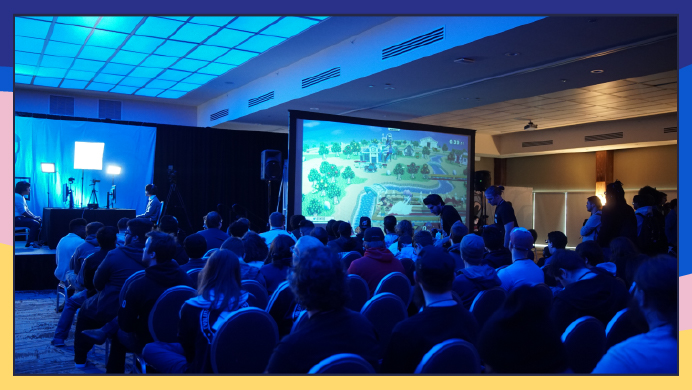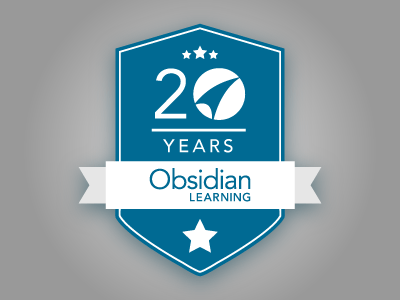Video can be an extremely efficient and impactful tool to convey important messages and learn new skills. Not all videos are created equally, however. If you’re looking for videos that engage employees both emotionally and socially, you need to put in place the right strategies to provoke the specific reaction, behavior change, or skill acquisition/enhancement. Here are 5 elements to implement in your learning videos to boost emotional and social engagement and thereby increase your chances of achieving successful learning outcomes.
Clearly defined intent
In order to connect emotionally or socially with something, you must first understand what justifies its existence. Why are you sitting down to watch this video? Is it to get you excited about signing up for a development program? Inspire a sense of accomplishment? Learn about a new company initiative? Whatever the aim, before you’ve shot a single frame you need to be clear on the overarching purpose of the video so that you can focus on inciting the necessary emotional response. If you’re seeking to develop a sense of competency, your video might depict skilled, efficient employees. If your aim is to create common ground and spark a connection among employees, you should consider some type of “we’re all in this together” messaging. The intended purpose of the video should drive every aspect of the design and production.
Paired music
Music can create powerful social and emotional connections. Have you ever watched a scary movie without the music? It’s just not as scary, right? Without the eerie build-up of dissonant notes scraping together, you don’t FEEL that anticipation of something terrible about to happen. Music can have a huge impact on your overall response to a video, so taking the time to select compositions that fit both the mood and message is crucial.
Look back to the video’s intent to get some perspective on the emotion(s) you want to invoke musically. Musical selections should correspond to each instance of intent. Defining such moments will help narrow your search. Make a mental (or physical) checklist of the characteristics that describe the overall tone of your piece. Happy? Look for music that conveys light-heartedness. Sad? Something with a somber feel will be appropriate. Optimistic? Find something peppy. The music will reinforce the visual depictions of those same attitudes.
Music was a big driver of the emotional impact in this piece for Social Motion Skills. The video opens with a white screen and the first thing you hear are three gentle, almost vulnerable, piano notes. Viewers immediately understand that the topic at hand – young people with intellectual learning differences – is serious and somber. The music helps highlight the many challenges faced by the young interviewees. As the story progresses and we learn more about the programs available at Social Motion Skills, the melancholy mood transitions to an empowering, uplifting feel, as does the music. The musical transition solidifies the message and signals that the story has taken a hopeful turn. As the story moves from “we’re here to help” to “these are the kids that we’ve helped,” the music elevates the feeling of released tension and concludes with an optimistic and joyful tune.
Let’s circle back to the intent of our video. Through these emotional drivers, we hope to inspire parents and kids to connect with each other through Social Motion Skills and encourage them to be a part of a community that supports them. The emotional journey of the video is intended to inspire hope that these people can improve both their social and professional skills, make friends, and live happy lives. The video illustrates to anyone involved in the nonprofit that they are making an impact and hopefully inspires them to continue their hard work.
Sound effects
Along with the visual and musical elements, sound effects, when used tastefully, can help define the tone of learning videos. Like salt on meat, sound effects can elevate video at key moments of emotional connection.
In the Obsidian IDEA Model video, the sound of wind, the narrator’s serious tone, the music, the color scheme, and the shaky footage combine to make the viewer feel the harsh elements of winter. The soft strike of a match followed by the creaking of wood give the audience some idea of the difficulty the young girl might have concentrating on her studies. Though each of the sounds described might engender unique associations, they heighten the deeply personal nature of the story, rooted by emotional connection.
Defined target audience
A clearly defined target audience allows you to make informed design decisions. Determine the age group, gender, social background, interests, and profession of your viewers. This information helps you narrow your design process to achieve more effective results. A younger audience will most likely have different musical preferences than an older audience. An engineer would likely prefer detailed, specific content. A more sophisticated demographic might call for more complex colors, a somewhat reserved color palate, and serif typography. Targeted designs pay off; when viewers feel that content has been created just for them, buy‑in is that much easier to obtain.
Unified tone
A captivated audience is a good measure of a learning video’s success. The first note of music, the rich texture added by a skillful voiceover professional, the color scheme, and independent of whether the video is animated, stop-motion, or real footage – each element should be purposeful and holistic. Harmonizing these elements to create a unified tone is essential.
Again, the tone stems from the intent. If you’re trying to generate excitement about a new development program, you may want to create some fun and energetic motion graphics, or perhaps video some of your employees so you can capture genuine facial expressions and real life situations. In either case, the music would need to be upbeat and of a style/genre that corresponds to the target audience. You might use bold typography and bright colors. The script would also need to be crafted to appeal to that same target audience, and the voiceover characterized by an enthusiastic tone.
Another option would be a video that has a lower production value. Such videos tend to have great social impact because they seem genuine. Filming a highly experienced expert deliver a credible message on a smartphone can help viewers connect on a peer to peer level. Without the polish of a big production the personal touch can help employees feel as though they belong, and that people like them are valued by the company.
As you can see, there are a lot of moving parts. But keeping these 5 integral elements – focused intent, appropriate music, judicious sound effects, a clearly defined target audience, and unified tone – at the forefront of your designs will help increase the social and emotional impact of your video offerings, ensuring lasting impressions on your learners.







